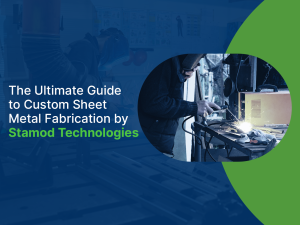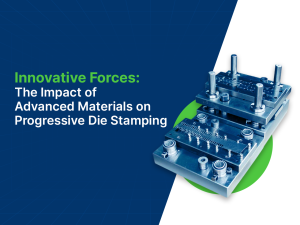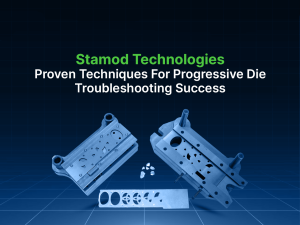Injection molding is a manufacturing technique that has lately been in vogue to make products by injecting molten materials into a mold cavity. This production method offers various advantages, including efficiency, speed of production, precision, consistency, versatility, customization, cost-effectiveness and scalability, over other manufacturing methodologies. This is why diverse sectors such as automotive, defense, medical, aerospace, electronic, and entrepreneurial, are using injection molding techniques to get cutting-edge material and technology breakthroughs.
7 Advancements in Injection Molding Trends
If you are someone who is interested in the field of manufacturing and engineering design, understanding the advancements in the injection molding process become essential for you. These refinements have indeed made injection molding a cornerstone of modern manufacturing techniques.
Let us see some key advancements in injection molding technique that have revolutionized the industry:
1. 3D Printing / 3D Printing Services
3D printing is a manufacturing technology that facilitates the production of three-dimensional objects. If you want to produce complex geometry, rapid prototyping, customization, and local or distributed manufacturing, 3D printing offers a comprehensive approach.
3D Printing Process Step by Step
The step by step 3D printing process is listed below:
- 3D printing starts with constructing a 3D model of the entity that is to be produced. This 3D model can be created by computer-aided design (CAD) software or 3D scanning.
- In the next step, a specialized software called slicers is used. It divides the digital model into thin horizontal layers. Further, the slicer generates a G code or instructions that guide the 3D printing process.
- The 3D printing starts the production process, taking care of the instructions generated by the slicer. The material is deposited layer by layer, gradually giving shape to the entire structure.
- Once the printing is done, the product is cleaned, printed, and assembled.
The various other benefits of 3D printing services are:
- It enables small-batch production
- It reduce inventory costs
- The process does not require expensive molds. Hence, it’s cost effective.
- The process is suitable for low-volume production
2. Industry 4.0 Manufacturing
Industry 4.0 manufacturing concepts have brought the much required digitalization to the injection molding process. Smart injection molding techniques are now used in which the machines are equipped with sensors, IoT, data, analytics, Augmented Reality (AR), and Virtual Reality (VR) techniques.
These smart injection molding methods have propelled a transformative shift, allowing real-time monitoring and control of the manufacturing process. All in all, it boosts the efficiency and quality of injection molding processes. However, we have yet to witness some of the best smart injection molding methods.
The various other benefits of Industry 4.0 Manufacturing are:
- It enables mass customization, enabling manufacturers to meet a wide demands
- It improve inventory management
- Through this, the manufacturers can respond quickly to market changes and customer preferences
- Smart techniques reduces unexpected equipment failures
3. Multi-Material Injection Molding
Injection molding is constantly being used to produce models which have multiple materials and products. Handling multiple materials simultaneously, multi-material injection molding facilitates the production of complex parts with different properties in different areas in a single mold cycle.
Overmolding is yet another manufacturing technique in which one material or part is molded over another. This technique has lately got attention for producing soft-touch grips, seals, and integrated gaskets.
The various other benefits of multi-material injection molding and overmolding are:
- It results in cost savings.
- It increased Functionality
- It provides flexibility in material selection
- It reduces material waste and lower environmental impact.
- It improved product integrity
4. Advanced Materials for Injection Molding
With ripening technological solutions, the development of new high-performing materials is also expanding at a large scale. These materials are quite lucrative for manufacturers.
These advanced materials include:
- Bioplastics
- Reinforced plastics
- High-temperature materials
- High-performance polymers.
Advanced products not only offer high durability, but also open doors of opportunities in industries like automotive, aerospace, and healthcare.
The various other benefits of advanced material in injection molding are:
- They reduce the environmental impact of plastic products
- They facilitate the production of more robust and durable parts
- They enhanced Mechanical Properties
- They make products that are highly resistant to chemicals, acids, and solvents.
5. Micro-Injection Molding
When it comes to producing extremely small and precise parts, micro injection molding is creating its mark on the manufacturing landscape. This precise technique is now widely used in industries such as electronics, aerospace, medical devices, and microfluidics.
Basically, it is a highly specialized form of injection molding with focus on intricate details. It is used for the manufacturing of extremely small and high-precision thermoplastic components which have micron tolerances.
The various other benefits of micro injection molding techniques are:
- Generally, the machines used for molding require less energy.
- The process increases Efficiency
- Wide range of materials can be used
- It is a cost-effective solution for producing high-quality parts.
6. Injection Molding Automation
Injection Molding Automation or industrial automation offers automation solutions like robotic part removal, inspection, and automatic packaging. With the advancement of automation and robotics, machines are now working shoulder to shoulder with humans. This automated process results in flexibility, increased production speed, consistency, and precision.
Automation in injection molding generates data and analytics, which will allow users to identify loopholes, and make better manufacturing decisions.
The various other benefits of the automated injection molding process are:
- It reduce labor cost
- It improved fabrication sustainability
- It allows better machine utilization
- It offers a large material choice
7. Simulation and Design Software
Intelligence software is making its way into every industry, and injection molding cannot be left behind. Advanced software tools are quite beneficial as they enable simulation and optimization of the injection molding process before the production process begins. This simulation and design software decreases trial-and-error iterations thereby increasing the time efficiency. They will further help you design better-quality products.
Some of the well-known simulation and design software used in injection molding are as follows:
- Autodesk Moldflow
- SIGMASOFT Virtual Molding
- SOLIDWORKS Plastics
- CoreTech Moldex3D
- Vero VISI Flow.
The various benefits of using software in injection molding process are:
- They facilitate teamwork efficiency
- They allows simulation of the product without wasting material
- They solves problems before production
- They reduce shrinkage and other defects.
All in all, these 7 Injection Molding Trends will boosts the efficiency of manufacturers by 50%advancements. These advancements have improved manufacturing precision and product quality. Further, they also contribute to sustainability and reduce environmental impact. Hence, using these 7 trends in injection molding will allow you to get the most out of your product and manufacturing firm.

Engineering
Manufacturing
Prototyping
Software Development
AI for Manufacturing
Engineering
Manufacturing
Prototyping
Software Development
AI for Manufacturing








